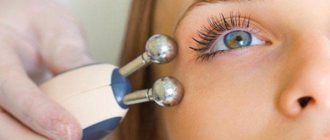Injuries to the facial bones of the skull are quite common, with injuries to the nose occupying the leading position. Statistics show that about 40 percent of facial injuries occur due to a complex fracture of the nose. Such an injury occurs when someone falls on their face, for example, as a result of an accident or a fight.
After an injury, the patient must be examined by a surgeon. In most cases, such injuries result in bone fracture or cartilage damage, which is visible to the naked eye. To assist patients, repositioning of the nasal bones is indicated.
Author of the article / Site experts Shulepin Ivan Vladimirovich, traumatologist-orthopedist, highest qualification category
Total work experience over 25 years. In 1994 he graduated from the Moscow Institute of Medical and Social Rehabilitation, in 1997 he completed a residency in the specialty “Traumatology and Orthopedics” at the Central Research Institute of Traumatology and Orthopedics named after. N.N. Prifova.
Repositioning of the nasal bones
Repositioning of the nose will be required in one of three cases of damage in the area of the nasal skeleton:
- with a closed injury to the nose, when the skin surface is externally intact or slightly damaged (bruising, swelling, minor scratches), but an x-ray shows a violation of the integrity of the nasal bone;
- with an open fracture of the nose, as a result of which there is a rupture of soft tissues, bleeding of various types, bones may be exposed from the wound, and fragments are visible;
- in case of a displaced injury, when the incorrect position of the bones is externally visible.
The nose is realigned by a maxillofacial surgeon or traumatologist. Patients with such injuries must be hospitalized as quickly as possible, since nasal injuries can interfere with normal breathing, and it is also very important to take an x-ray to obtain information about possible associated injuries (injuries to the eye sockets, frontal bone, etc.). Considering that 70% of nasal fractures are accompanied by a concussion, one can imagine the scale of the injury that the victim received.
With a closed fracture
First aid for a closed fracture should be provided at the site of injury. This can be done by others, or by the victim himself, if he remains conscious and can provide himself with basic help. So, immediately after receiving a closed injury, you need to apply ice to your nose - this will help narrow the blood vessels, stop the spreading bruise and swelling of the nose.
When admitted to a hospital, the patient is given an x-ray to see which bone is broken. Retraction of the nasal bridge, as well as displaced nasal fractures, are common. It is very important that with a closed fracture the integrity of the nasal septum is preserved - then repositioning is much easier.
Complex fractures are repaired surgically, but without cutting tissue. To do this, a Volkov elevator is used - the instrument is inserted to the required depth, after which part of the bone is lifted and restored in the right place. All interventions are performed under local anesthesia. After reposition, turundas with a medicinal substance are placed in the nose, which will help to initially support the tissue near the nasal septum until the formation of callus begins. Seven to ten days after surgery, a second consultation with a doctor is indicated.
In case of a displaced nasal fracture, the instrumental-finger method can be used, when the doctor either with his fingers or with the help of fingers and instruments sets the nasal bones to their normal position.
With an open fracture
If an open injury occurs, surgery is performed to realign the nose under endotracheal anesthesia. In some cases, doctors may use other methods of inducing a patient into a narcotic sleep. Typically, open fractures are more complex - this is primarily due to the fact that:
- blood loss occurs;
- there is a high risk of infection in the blood;
- Such injuries mostly contain fragments and may have atypical inclusions (glass, metal particles) that must be removed during surgery.
Surgery takes quite a long time depending on the extent of the lesion. Doctors restore the structure of the nasal bone and treat soft tissues. The fragments are being realigned. The tampons will hold the bones in position until the healing process begins. Usually, a few days are enough for the bones to “set.” After the operation, the skin is sutured and a sterile bandage is applied.
After injury
After nasal repositioning, recovery is extremely important. Therefore, during the rehabilitation process, some restrictions are imposed on patients:
- Patients should not go to the bathhouse or sauna for several weeks, as this can cause extensive nosebleeds.
- You should not wear glasses so as not to create pressure on the nasal septum.
- Avoid situations that could result in the person getting hurt again.
- If you have breathing problems, it is recommended to use vasoconstrictor drops.
All rules must be followed in full. This is very important to avoid the negative consequences of a fracture.
The child has
Nasal fractures in children occur during a fall, playing with peers, or as a result of traumatic situations in physical education lessons. Children have a peculiarity of injury - due to the elasticity of the nasal septum, there are no immediate consequences, as in adults. The child may not even remember that he hit his nose - severe pain will go away over time, but after a few days the symptoms of injury will begin to increase - the nose will become swollen, a characteristic nasal voice will appear, congestion, the child may complain of a headache. If such symptoms appear, you must contact the clinic, where the baby will have an x-ray and a diagnosis will be made. It is quite possible that this will not be a fracture, but a subluxation of the quadrangular cartilage, which the doctor can easily correct.
Why do you need a cast after rhinoplasty?
October 25, 2020
Plastic surgery always means a violation of the integrity of the tissue, even if this intervention only brings positive changes in appearance. Rhinoplasty is no exception. Thus, during surgical correction of the nose, the bones, cartilage, and septum are usually affected. Anatomical structures that act as supports become vulnerable to external influences during the first time after rhinoplasty. To prevent various undesirable consequences associated with accidental injury, a plaster cast is applied to the nose immediately after plastic surgery.
The function of this plaster cast is to control swelling and protect against mechanical damage. Since the plaster has a slight pressure effect, the swelling does not spread too widely and the swelling of the tissues is less pronounced. Another purpose of the bandage is to fix the new shape of the nose and septum, which helps keep the fragile bones from shifting as swelling increases. This feature has a direct aesthetic and functional consequence on the final result of rhinoplasty. And although we understand the purpose for which a plaster cast is used after rhinoplasty, not everyone knows what plaster is and how it is made. We examined these and other aspects in more detail together with an expert, plastic surgeon from the GALAXY Beauty Institute, Valery Yuryevich Staisupov.
What is plaster and how is it applied?
A plaster cast is made from special plaster bandages. Simply put, this is an ordinary bandage sprinkled with plaster powder. When water is added, it hardens and takes on the desired shape. Now, of course, no one sprinkles bandages with plaster powder. Doctors use factory-made plaster bandages, but that's what they used to do. Immediately after rhinoplasty, to ensure that the white plaster remains flawless, a special device is glued under the nose to absorb blood. After 24 hours it is removed. But we asked an expert how to make a plaster cast.
Valery Staysupov comments
To properly apply plaster to the nose, the surgeon cuts out pieces of the desired size. Such a dressing can have up to 5 layers, each of which performs a special function (antiseptic, protection against injury and damage, etc.). The plaster is applied for 7-10 days and is not repositioned during this period. It is extremely rare that re-application of plaster may be required, if there are sufficiently serious reasons. This is not usually done.
When should you change your cast after rhinoplasty? Replacement may occur if the patient accidentally or deliberately damages the bandage, loosens it, or removes it. Here you need to remember that gypsum is afraid of water. This complicates hygiene procedures a little, so you need to wash your face carefully. Careless actions may lead to an additional visit to the clinic. There is no need to insert any objects between the bandage and the skin of the nose, or lift or loosen the cast to “look” at the nose. Otherwise, the bandage will simply fall off and you will have to re-apply the plaster to your newly operated nose, and this process is definitely not pleasant.
How is the cast removed after rhinoplasty and is it painful?
Removing plaster is not comparable to the process of eating desserts, but this procedure can hardly be called painful. Rather, patients feel discomfort. As a rule, 5-10 minutes are enough for the surgeon to rid you of the plaster cast.
In order for everything to go correctly, the patient lies down on the couch, but at the same time his head will be in a slightly elevated position in relation to the rest of the body. Next, the doctor uses special tools to pry up the edges of the bandage, and then carefully and smoothly lifts it. In this case, the doctor cannot make any sudden movements - the plaster needs to come off in a single layer. At the end of the procedure, the plaster cast is removed and the nose is treated with an antiseptic.
It is prohibited to remove the plaster yourself. If you really want to, then it’s unlikely that anyone can stop you from doing it. But possible consequences may include deformation of the nasal bones, tissue displacement due to increased swelling, and an increased risk of wound infection.
Don't even try to remove the nose cast yourself. Is it dangerous!
In addition, if you do this, then any specialist can refuse responsibility for the final result of rhinoplasty, and this is quite fair. After all, if you do not follow the doctor’s recommendations, then why should he be held responsible? But if your cast falls off on its own for some reason, be sure to immediately contact your doctor so that he can put the bandage on you again. Here you need to understand that an experienced plastic surgeon will certainly understand whether this happened for reasons beyond your control or whether the patient himself tried to remove the plaster.
TO
Valery Staisupov comments
When the immobilizing bandage is removed, the first impression may sometimes not be as rosy as imagined. The nose may look larger and more massive than you planned, but there is no need to panic - these are all the consequences of external and internal swelling that has not yet gone down. However, the disappearance of noticeable imperfections that bothered you before surgery can be noticed immediately (for example, the absence of a pronounced hump). By the way, after removing the plaster, the swelling may increase in some patients, because previously it was restrained by the bandage.
The overall shape and condition of the nose will change over the course of about 9-12 months, when the swelling finally subsides and all restoration processes in the body are completed. But the most pronounced swelling goes away on its own within the first month after surgery.
Why does my nose itch under a cast?
Constant itching is not a very pleasant phenomenon, especially if it itches under a cast and there is no way to relieve this feeling at least a little. It happens that after rhinoplasty, itching under the cast bothers you day and night.
However, surgeons do not provide a magical way to get rid of unwanted sensations. As experts say, itching is a temporary phenomenon that will go away on its own after the cast is removed. But until this happens, patients are offered only one thing - to endure steadfastly. It is strictly forbidden to try to scratch your nose by getting under the cast with a toothpick, knitting needle or other objects. Such actions can damage the bandage, which can lead to improper fusion of the operated structures or the plaster falling off and the need for reapplication.
Splint after rhinoplasty
Some plastic surgeons, instead of plaster, prefer to use a medical splint - also a fairly strong bandage, but made of other materials (plastic, metal-plastic, etc.). They perform all the functions of plaster, but look smaller, neater and more aesthetically pleasing. A splint is worn for as long as a cast. A number of experts consider the splint to be a worthy alternative to plaster, while others do not agree with this opinion. However, every doctor has the right to his own position, based on examples of personal practice.
Valery Staysupov comments
I choose a plaster cast, which has more benefits than a regular splint. Plaster allows you to repeat the shapes that the surgeon gives it. It fixes the tissue exactly as the specialist sees it, but even millimeters play a role here: somewhere you need to press harder, somewhere weaker. For example, pressure in the area of the supertype, or slightly weakened pressure in the area of the upper back, or the desired pressure in the area of the tip of the nose.
Rules after removing the cast
After removing the plaster cast, the patient should not forget that his nose is still easily vulnerable, so you need to monitor it and carefully protect it from any injuries. Recommendations for the post-plaster period include sleeping on your back, always wearing a seat belt in the car, and trying not to move your arms suddenly. Several other restrictions apply:
- Do not wear glasses (the temple can damage the bridge of the nose)
- temporarily exclude sports activities
- do not be in crowded places
When washing and applying toner, you need to carefully treat your face, trying not to touch the operated nose once again. Following these basic recommendations will allow you to undergo rehabilitation after rhinoplasty without undesirable consequences, and soon you will be able to appreciate the final results of plastic surgery in the form of a beautiful and neat nose.
Book a consultation with Dr. Staysupov via WhatsApp or Viber
Indications and contraindications
The indication for surgery is direct bone damage caused by trauma. It is best to perform the operation in the first few hours after the injury. The maximum for such interventions is seven days. Otherwise, callus will begin to form and it will not be so easy to restore the integrity of the bones.
Contraindications to immediate bone reduction are:
- problems with blood clotting;
- herpes;
- severe damage to internal organs resulting from trauma;
- inflammatory processes in the nasal sinuses;
- patient's state of shock.
Contraindications to the operation do not mean that it will not be performed at all. The intervention is postponed for some time until the patient’s condition returns to normal and the pathologies that interfere with surgical intervention are eliminated.
Fracture division and symptoms
It should be understood that possible fractures of the nasal bones do not have one type of damage, but have several options.
This includes a closed, open, displaced form and a fracture of the nasal septum.
The closed form is characterized only by the presence of edema with abrasions. An open injury is manifested by damage to the bones and skin, in which the formation of bone fragments is often observed.
A displaced fracture is characterized by asymmetry of the nasal tissues, where skin trauma and the presence of signs of a closed form of damage cannot be excluded.
A fracture of the nasal septum is characterized by the nose falling inward.
Fractures of the nasal bones have special signs; knowing and identifying them, you should immediately visit a surgeon.
Symptoms of a nasal fracture usually include:
- Heavy or scanty bleeding.
- State of shock with loss of consciousness.
- Swelling of the tissues of the nose, cheekbones and eyes.
- Blood "threads" in the eyeballs.
- Respiratory dysfunction.
- Wounds with shrapnel.
- Pain syndrome in the nasal area.
- There are bluish bruises at the fracture point and under the eyes.
Fractures of the nasal bones are caused by the presence of not only primary signs that are detected in the first 24 hours after injury, but also such signs as increased body temperature, softening of tissues and redness of the injury site. This clinical picture may indicate the occurrence of infections in the form of harmful microorganisms.
Complications and consequences
If the patient does not follow the doctor’s recommendations, he may encounter negative consequences after a fracture, such as the formation of a hematoma that interferes with bone fusion, or malunion, which is accompanied by a pronounced defect. Also, problems during the recovery stage can lead to loss of smell, asthma, and migraines. In patients with improperly fused bones, nasal breathing is impaired, inflammatory processes occur in the nasal sinuses, and polyps may appear.
To prevent complications and serious consequences from appearing, bone repositioning must be carried out in a timely manner, immediately after injury. In Moscow, such an operation can be performed for an average of 7,000 rubles. The price depends on specific clinics, as well as the complexity of the intervention.
The recovery period after surgery takes about ten days; in complex cases, recovery can take up to three weeks.
Repositioning of the nasal bones is a mandatory procedure when a nasal injury occurs that damages the integrity of the bone tissue. It is necessary to do reposition as soon as possible, and after the injury, a consultation with a doctor is required to find out how severe the damage is. Timely intervention is the key to successful recovery of patients.
Diagnostics and first aid
To reduce pain, relieve swelling and temperature, apply ice or a wet cloth, preferably sterile, to the injured area and urgently take the patient to the emergency room or surgery.
The doctor determines the severity and nature of the fracture using special studies:
- Lateral projection for examining the nasal cavity with an endoscope;
- X-ray to diagnose the presence of displacement can be replaced by CT or MRI;
- Rhinoscopy to determine the location of damage to the mucous membrane;
- Collecting urine and blood for analysis.
In addition, all patients are required to receive tetanus vaccinations and are given painkillers and sedatives.
In cases where:
- Significant damage to the paranasal sinuses was established;
- There is prolonged, non-subsiding or recurring bleeding;
- An extensive and severe form of deformity was recorded.
The patient may be offered inpatient treatment.
Mistake #2
Wait for it to heal on its own. On the contrary, you should hurry to the hospital. After all, the most important thing in case of a broken nose is to gain as much time as possible. This is especially important for children and young people, in whom tissue healing proceeds very quickly, so after a week it will be too late to assemble the “puzzle” of broken bones - by that time they will have grown together (wrongly, of course). And then you will have to break them again in order to put them in place as they should. To do this you will need to undergo rhinoplasty. This is a much more complex, expensive and traumatic operation.
In general, it is imperative to seek medical help with any injury to the nose. First of all, in order to exclude the most dangerous complication of a fracture - hematoma of the nasal septum. If with this complication you leave everything as it is, then suppuration, an abscess and further melting of the nasal cartilage will inevitably occur, which is why it will subsequently take on an ugly shape. The most common consequences of a nasal fracture left without treatment is chronic rhinitis with impaired nasal breathing.
Similar services in other companies
- Selection of contact lenses ophthalmologist (ophthalmologist) initial appointment 0
b - Selection of simple and complex glasses by an ophthalmologist (ophthalmologist) without ordering 0 b
- Study tomography (tomogram) computer multislice (MSCT) non-contrast knee joint (2 joints) 4,000 b
- Study tomography (tomogram) computed multislice (MSCT) non-contrast wrist joint (1 joint) 2,800 b
- Study tomography (tomogram) computer multislice (MSCT) non-contrast wrist joint (2 joints) 4,000 b
- Study tomography (tomogram) multislice computed tomography (MSCT) non-contrast thoracic spine 2,750 b
- Study tomography (tomogram) computer multislice (MSCT) non-contrast ankle joint (2 joints) 4,000 b
- Study tomography (tomogram) multislice computed tomography (MSCT) non-contrast foot (2 limbs) 4,000 b
- Study tomography (tomogram) computer multislice (MSCT) non-contrast knee joint (1 joint) 2,800 b
- Taking a smear or scraping from the urogenital tract at the patient examination center 0 b
- Study tomography (tomogram) computer multislice (MSCT) non-contrast ankle joint (1 joint) 2,800 b
- Study tomography (tomogram) computer multislice (MSCT) non-contrast of the abdominal cavity and pelvis 5 400 b
- Study tomography (tomogram) multislice computed tomography (MSCT) non-contrast cervical spine 2,750 b
- Study tomography (tomogram) computer multislice (MSCT) non-contrast shoulder joint 2,800 b
- Collecting smears and scrapings from patients 0 b
- Study tomography (tomogram) computer multislice (MSCT) non-contrast brushes 2,800 b
- Study tomography (tomogram) multislice computed tomography (MSCT) non-contrast hands (2 limbs) 4,000 b
- Study tomography (tomogram) multislice computed tomography (MSCT) non-contrast of the lumbosacral spine 2,750 b
- Computed multislice tomography (MSCT) examination, non-contrast, of the pelvic organs (bladder, prostate, uterus, ovaries) 3,500 b
- Computed multislice tomography (MSCT) examination, non-contrast, of the abdominal organs + retroperitoneal space (liver, pancreas, spleen, gallbladder, kidneys, adrenal glands, regional lymph nodes) 3,500 b
If you did not find what you were looking for on the page or want to find additional information on your request, try using the search form or follow the links to the following sections:
- Medical services
- Surgical operations
- Surgical recovery
No offset
In the absence of visible signs, it is determined by indirect ones, which include:
- pain in the damaged area;
- problematic nasal breathing;
- swelling and cyanosis;
- pushing through the back of the nose;
- presence of bleeding.
In any case, the patient should seek the help of a specialist who will help establish an accurate diagnosis. Cases have become quite common when, when the nose is injured, a fracture of the skull bones is discovered. In this case, bruises appear under the patient's eyes.
The favorable prognosis depends entirely on the speed at which the patient seeks medical help. After a fracture, the patient may have facial asymmetry for the rest of his life.
If nose correction is not carried out in a timely manner, prepare for the following complications:
- Incorrect fusion of the bone, which leads to deformation of the nose. For complete restoration, only high-quality plastic will help.
- The emergence of a number of chronic diseases associated with nasal breathing. Sinusitis and sinusitis.
- The appearance of snoring.
- Impaired sense of smell.
- The appearance of an abscess, manifested in the form of redness of the epidermis, an increase in body temperature and swelling.
Self-reduction of the nasal septum is strictly prohibited, as it can lead to negative consequences. When a nasal fracture is combined with a skull fracture, urgent medical examination and assistance is necessary.
Symptoms of damage without displacement:
- Prolonged bleeding over several minutes.
- Presence of injuries to the neck and head.
- Dizziness and fainting.
- Vomiting reflex.
- Visual impairment.
- Pain in the neck area.
- Weakness of the limbs.
Any damage cannot pass without a trace, since as a result of the injury, the bone skeleton, cartilage and its septum are damaged.
On a note
- In the hospital, after examination and rhino- or endoscopy (instrumental examination of the nasal cavity), the ENT specialist must assign the patient an x-ray of the nasal bones. Based on these studies, a diagnosis is made, and if surgery is needed, its strategy is outlined. If nasal swelling has not yet developed, it is better to perform surgery immediately. If there is swelling, the victim will be sent home for a week.
- The operation (reposition of bone fragments) can be performed under local or general anesthesia. Teenagers and adults, as a rule, have their noses “fixed” under local (usually topical) anesthesia. During the operation, the surgeon uses special instruments (elevators, similar to a narrow blade) and his own fingers to reassemble the broken nose. And then he fixes it from the inside with special tampons, and from the outside with plaster or thermoplastic.
- Tampons are removed 1–2 days after surgery, and the cast is removed after about a week. For a month, you need to protect your nose from re-injury and infections. It's better to sleep without bumping into a pillow.
Leave a comment (1)











